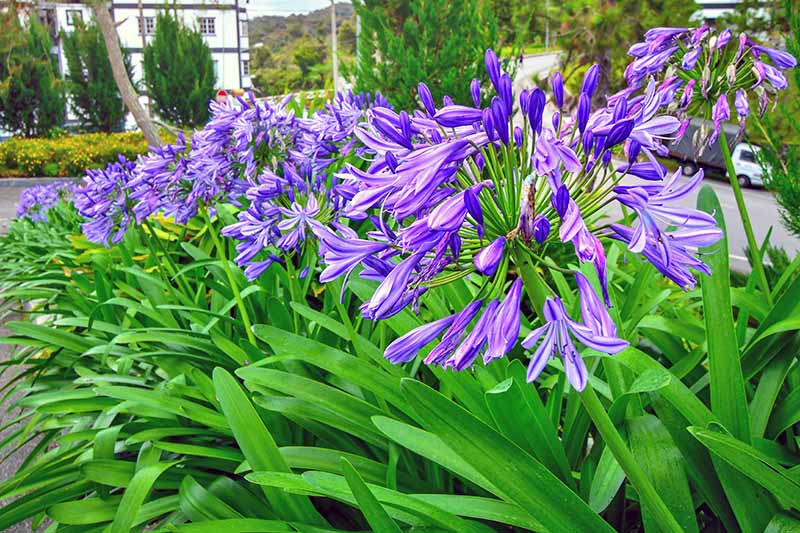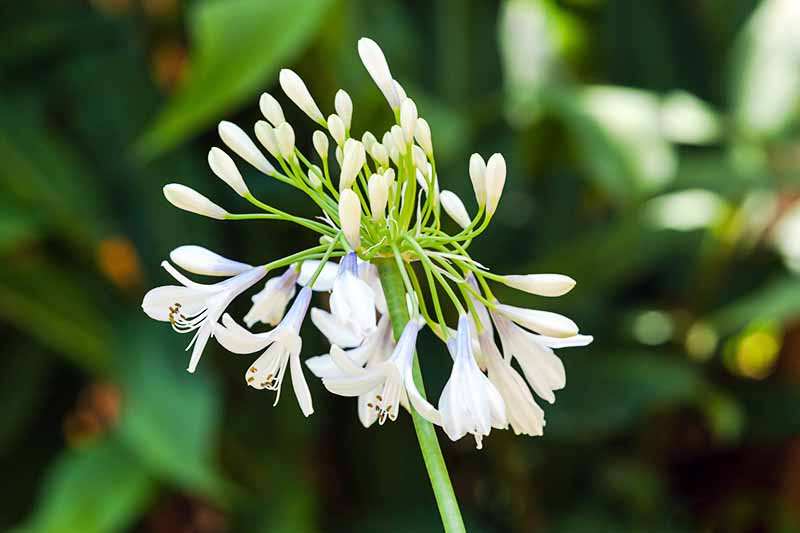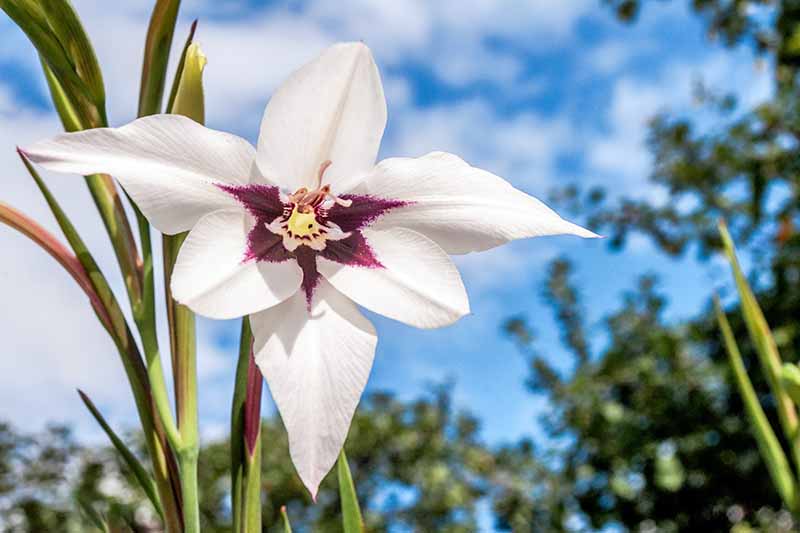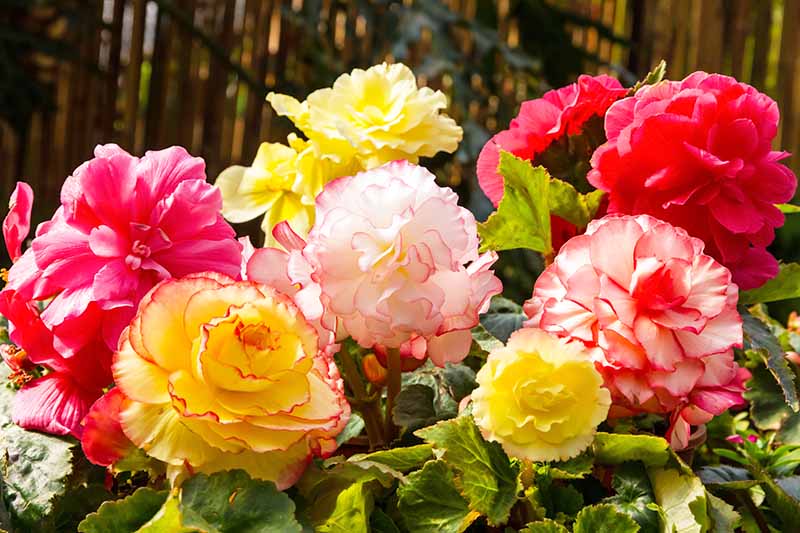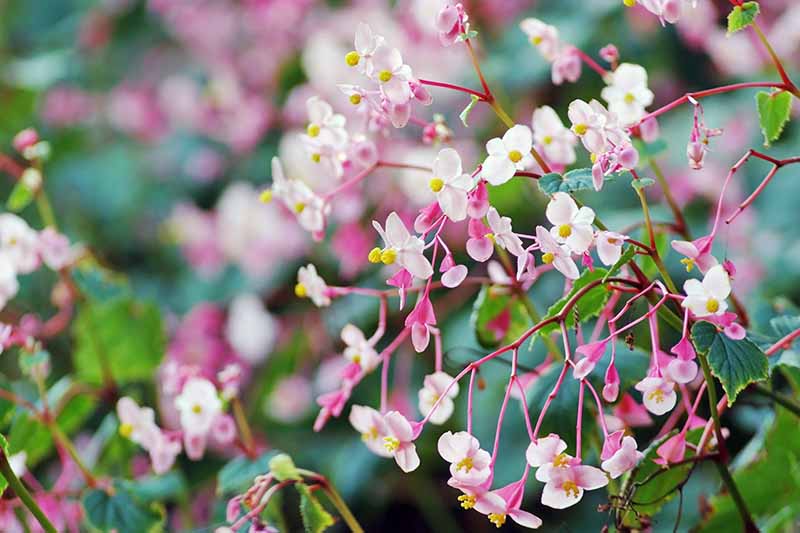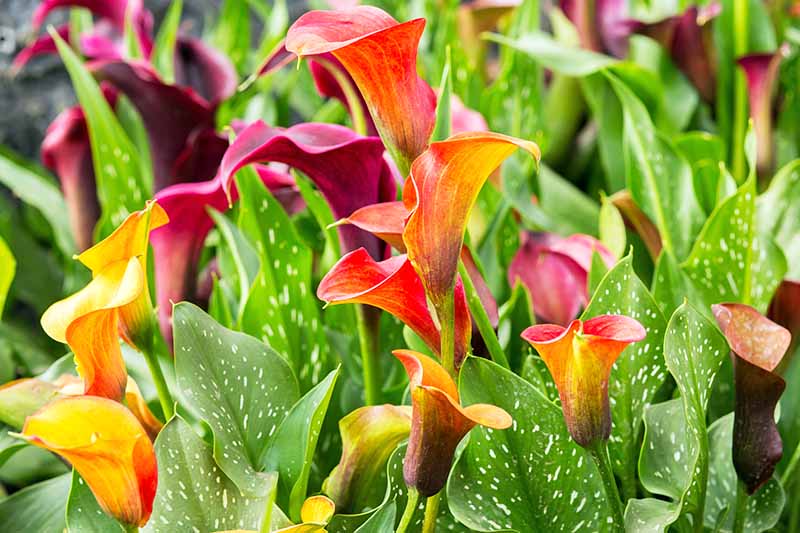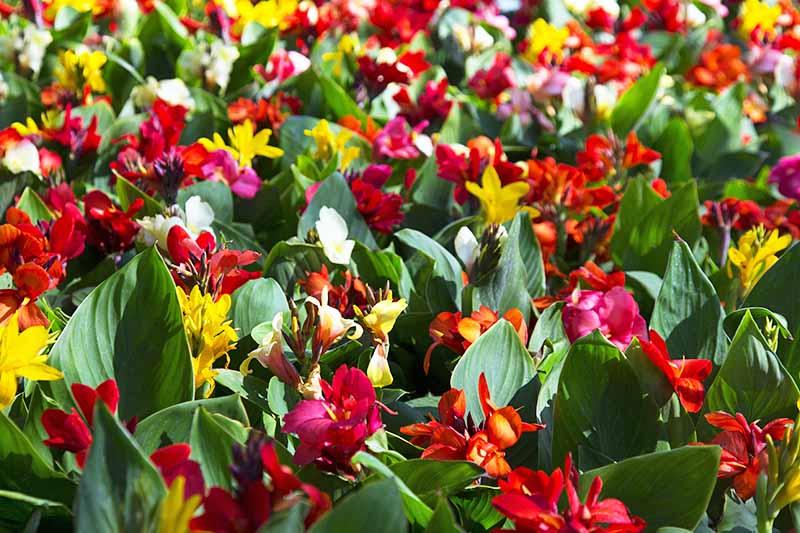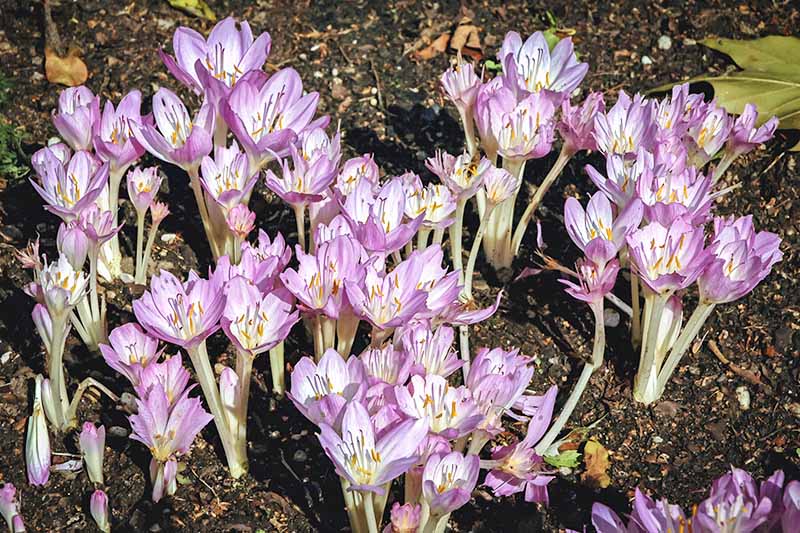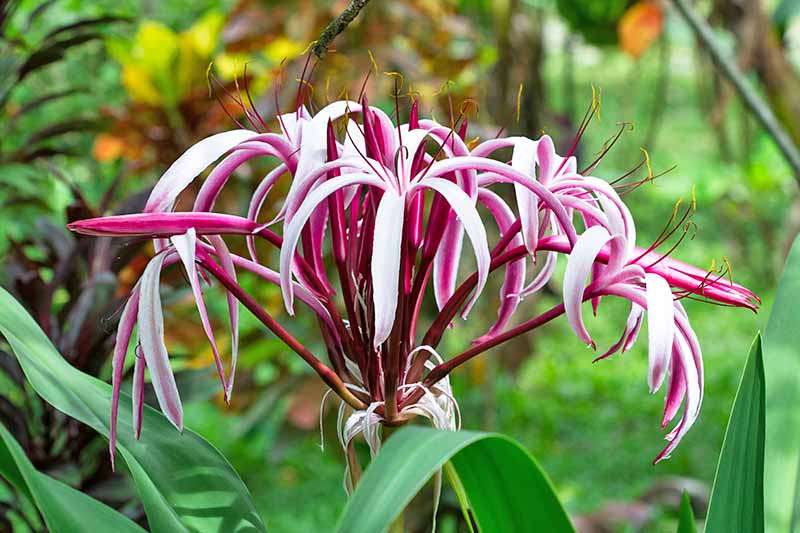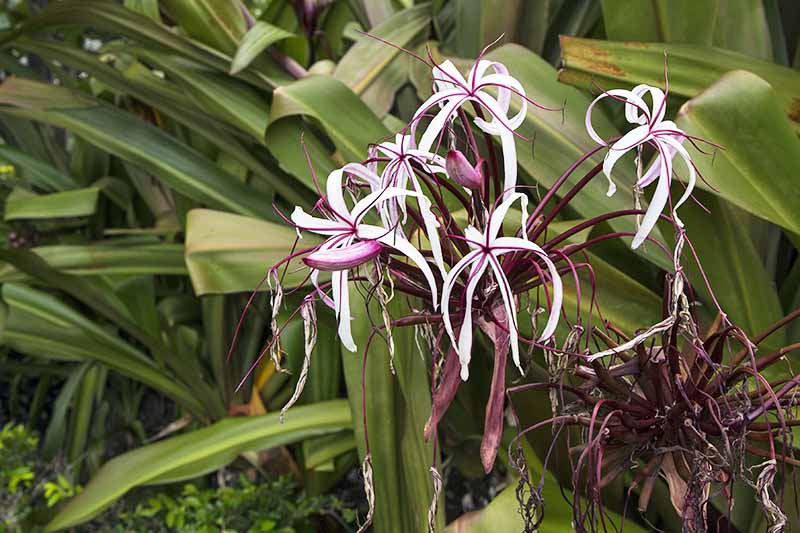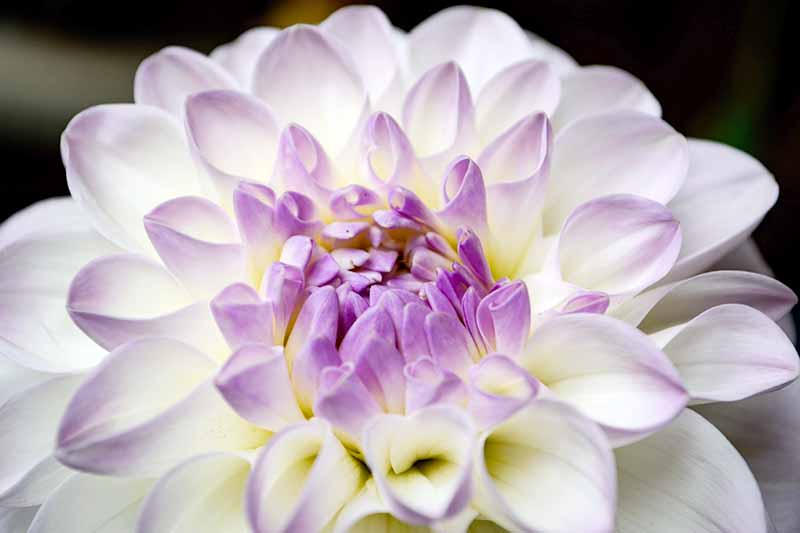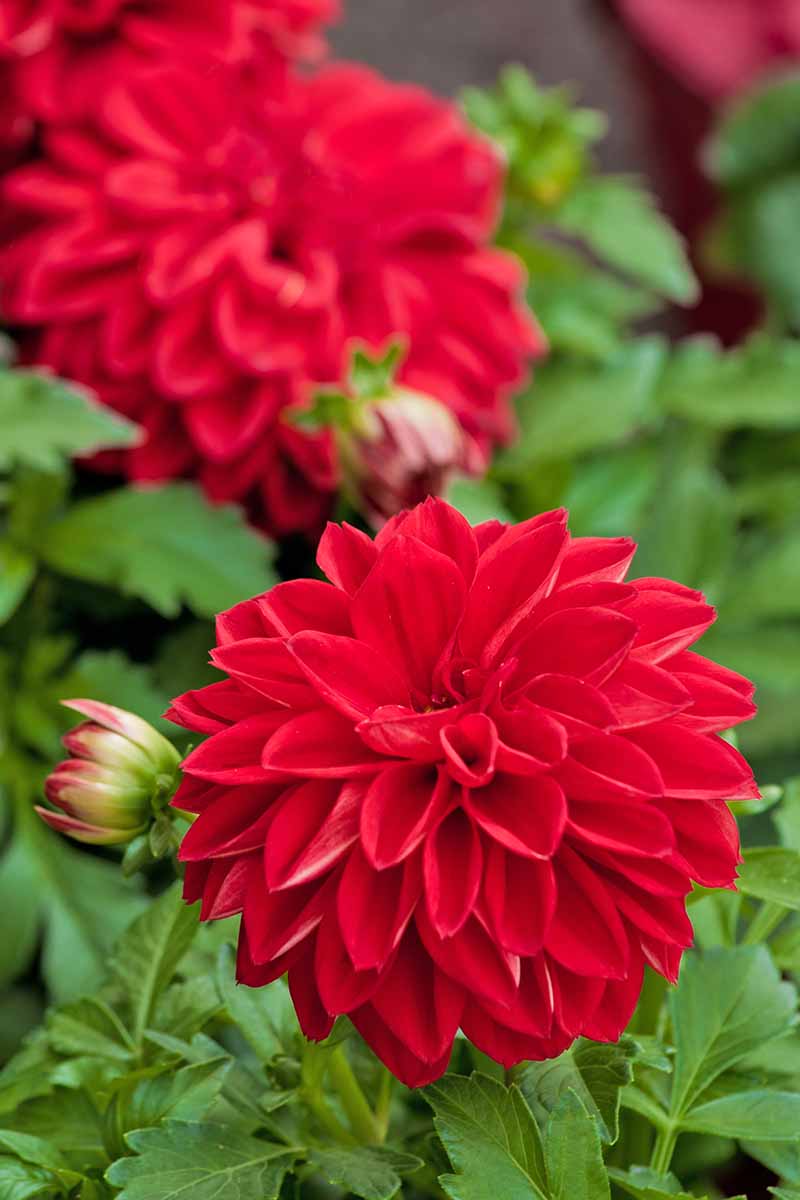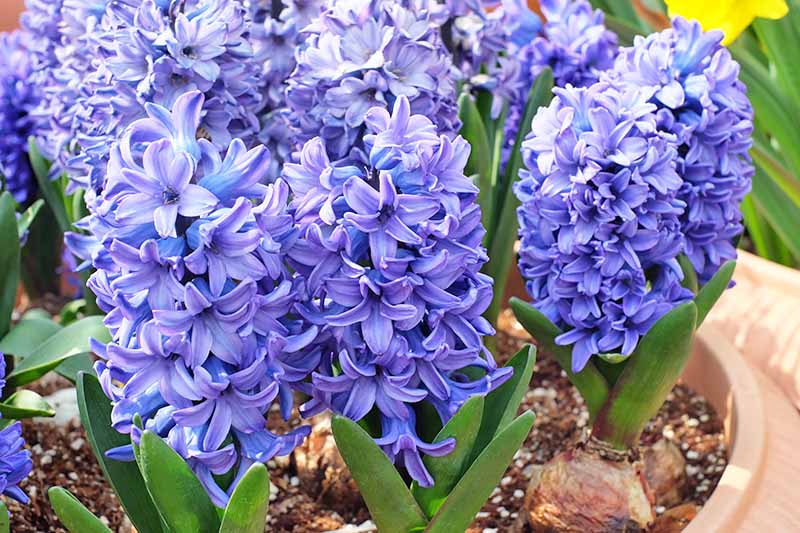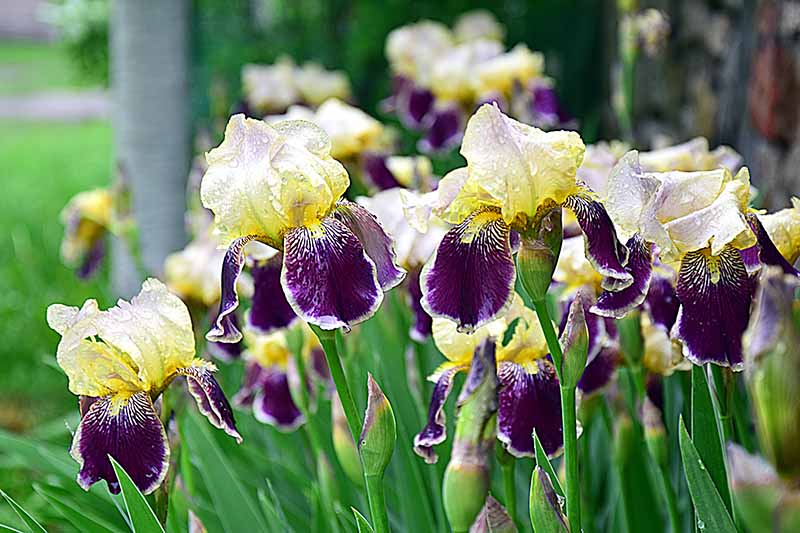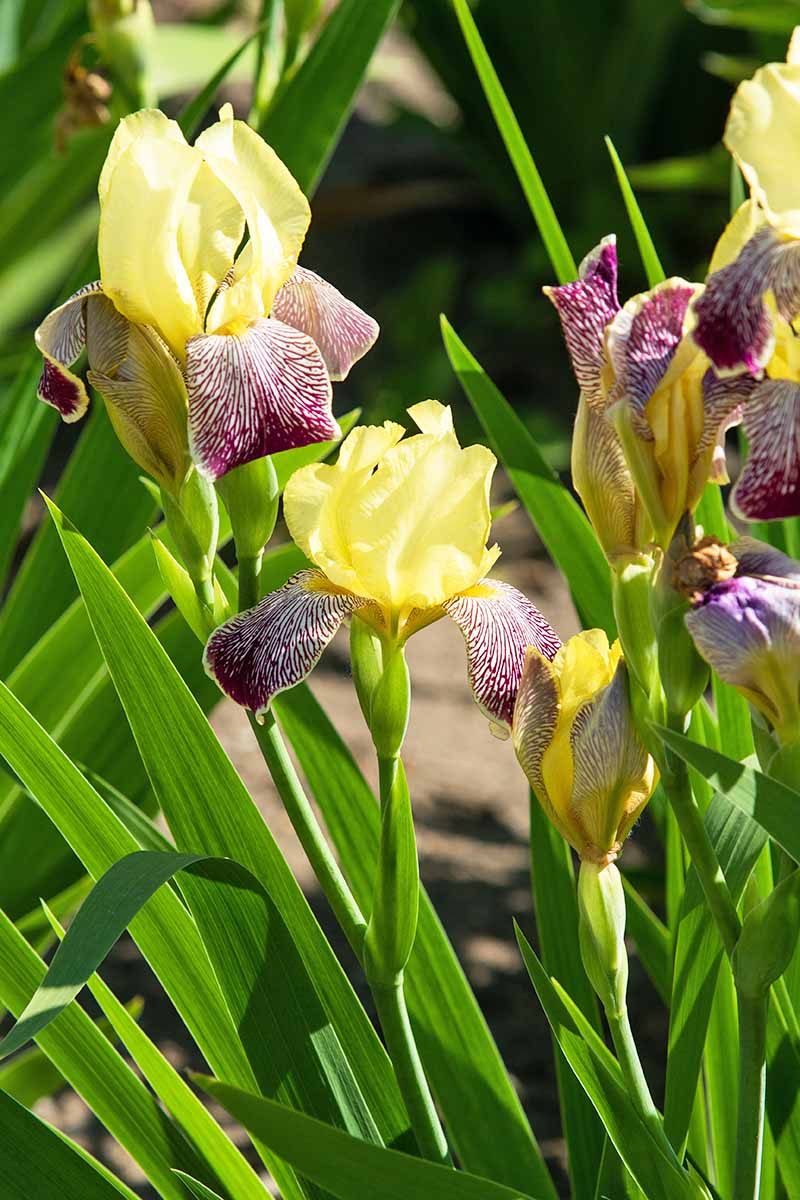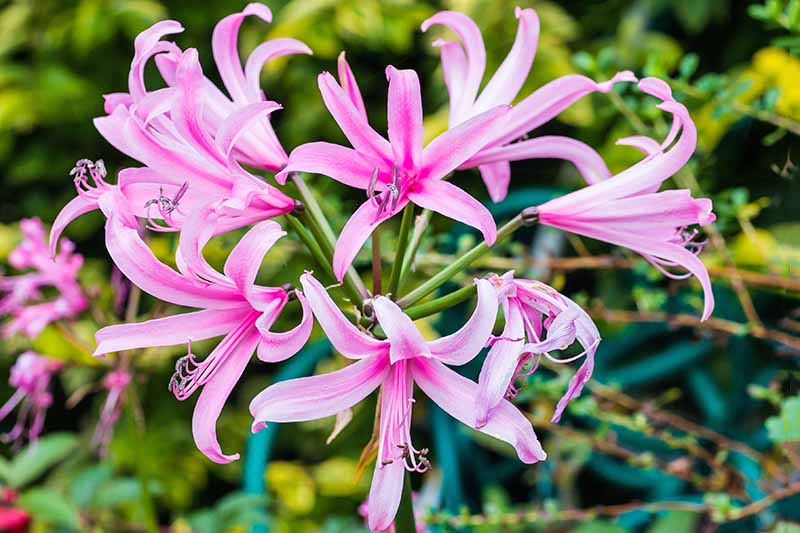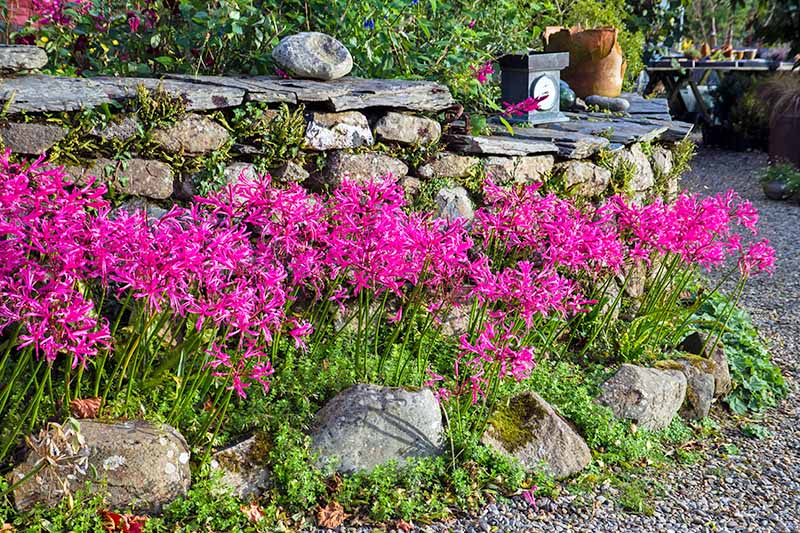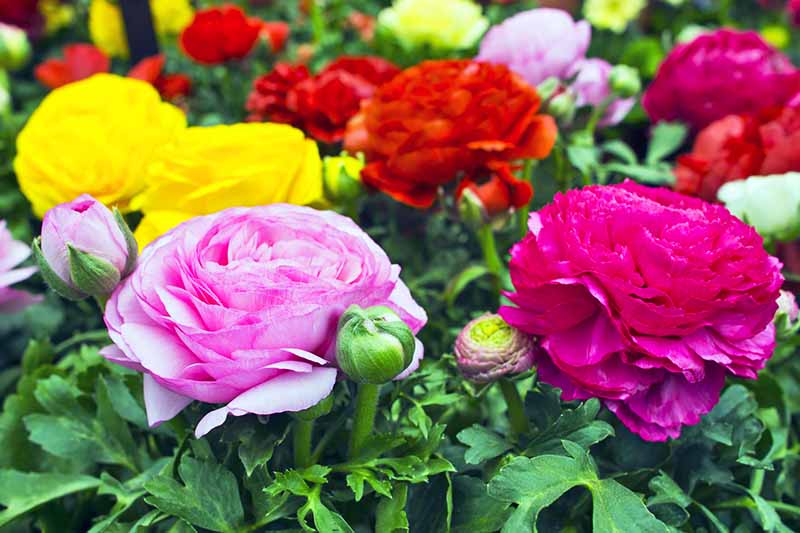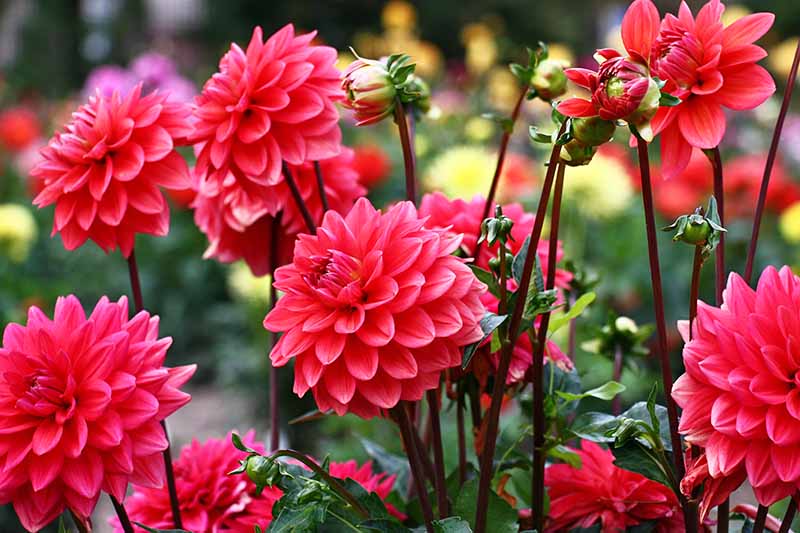Fortunately for all, this is also a season for enjoying some of the nicest flowers you’re going to see all year, especially when you invest in late summer flowering bulbs.
Many late season bloomers are available to bring a little extra color to the party later in the year, when other garden favorites are lagging.
We link to vendors to help you find relevant products. If you buy from one of our links, we may earn a commission.
The Best 15 Late Summer Flowering Bulbs Agapanthus Acidanthera Begonia Calla Lily Canna Lily Colchicum Crinum Crocus Dahlia Eucomis Gladiolus Hyacinth Iris Nerine Ranunculus
Let’s get to it!
The Best 15 Late Summer Flowering Bulbs
Some of the bulbs (and corms, rhizomes, and tubers) recommended here will bloom in the springtime and then put on an encore show in the late summer and into the fall. Others open in the summertime and continue blooming throughout the season until the first frost. That means you get lasting interest from these flowers, instead of the ephemeral beauty of springtime bulbs that can come and go faster than you might notice. Regardless of the bloom time of these varieties, almost all of them will need to be planted in the early spring to enjoy their late summer and early fall color. Some bulbs are not cold hardy. This means they won’t survive the winter if they are growing in the ground outdoors in northern climates. We’ve mentioned which late summer flowering bulbs meet this condition below.
1. Agapanthus
Ranging in color from white to blue to violet, Agapanthus, aka African lily or lily of the Nile, is a showy bloomer that thrives in USDA Hardiness Zones 6-11, depending on the cultivar.
Flowers top long stems that typically reach 3-4 feet in length, with a spread of 2-3 feet. This perennial thrives in many types of well-draining soil with a pH that ranges from slightly acidic to slightly alkaline, with moderate water needs. This deer-resistant option is wonderful for attracting hummingbirds and may be propagated by division. It grows from rhizomes that can be dug up for the winter, or mulch can be applied to protect varieties that can withstand light frost.
2. Acidanthera
A member of the gladiolus family, Acidanthera has upright green foliage that comes to a sharp point. Clusters of white flowers with deep maroon centers make pretty additions to bouquets, with a pleasing fragrance. Or, you might like to check out the blue and white ‘Twister’ Agapanthus plants that are available from Nature Hills Nursery. This is a new variety that’s of particular interest as the first bicolor African lily. Learn more about growing agapanthus here.
Acidanthera goes by many names, including Gladiolus murielae, G. callianthus, Abyssinian gladiolus, and peacock orchid. It grows best in slightly acidic soils – easy to remember based on the name, right? The corms grow slowly. Plant them in well-draining soil in full sun in Zones 7-11. Plants grown in cooler regions can be dug up for the winter. This deer-resistant plant is ideal for attracting hummingbirds.
3. Begonia
An old-timey classic, the begonia deserves a spot in your late summer garden. But a variety of species in the Begoniaceae family are available online and at garden centers, so you need to know what you are looking for. Tuberous begonias are hardy in Zones 9-11. They thrive in the shade in well-draining, slightly acidic soil, providing a welcome splash of color to darker areas of the garden. Like most of the plants on this list, they must be dug up and brought indoors to be planted again the next year in other growing zones, or grown as annuals. These sport large 2- to 8-inch-wide white, pink, purple, red, orange, yellow, or bicolor flowers that bloom on plants with dark green leaves. They may reach heights of 12-18 inches, with a spread of 1-2 feet. Single or double blossoms may be smooth, ruffled, or toothed. And some varieties are suited for planting in hanging baskets, while others grow upright. There’s so much to choose from with this flower! They are not drought tolerant, so you will need to remember to water them well through the summer months. Dividing the tubers can be difficult, since they are prone to rotting. The general consensus is that it’s easier to propagate these plants from cuttings. Look for Begonia x tuberhybrida varieties to be sure that you are getting a tuberous type. But keep in mind that other Begonia species are tuberous as well. For example, hardy begonias (B. grandis) are also tuberous. These have small pink or white flowers with yellow centers that grow on pink stems, and colorful foliage. Hardy begonias also love shade, and they will self-propagate from bulblets that form above ground in the fall. This type is smaller overall, with a height and spread of 1-2 feet. Hardy in Zones 6-9, be sure to provide these with rich, moist, slightly acidic soil. Both of these are not to be confused with other types of begonias, which often have small flowers and make an excellent ground cover. The wax leaf type (B. semperflorens), so-called for its waxy foliage, has fibrous roots. You may also find rhizomatous begonias, which are known for their distinctive foliage and are often grown in greenhouses.
4. Calla Lily
Calla lily, Zantedeschia aethiopica, will grow well in a variety of sun conditions and it favors slightly acidic soil. Cold hardy to Zone 8, plants reach a height of 2-3 feet with a spread of 18-30 inches, depending on the variety.
White is the classic hue for these showy flowers, but a wide range of colors are available today, including red, pink, orange, yellow, deep purple, black, and multicolored. Though drought tolerant, this plant also doesn’t mind wet soils and boggy locations. Deer and rabbit resistant, calla lily can also tolerate poor soils. Digging up the rhizomes at the end of the season is recommended, for overwintering indoors.
5. Canna Lily
Not to be confused with the previous entry on our list, canna lilies have large leaves that may be green, purplish, bronze, and striped or variegated, and flowers that emerge on tall stalks in a variety of colors. Read more about growing calla lilies here.
Red, orange, cream, pink, yellow, or bicolor blooms make this tropical rhizome a standout in gardens in Zones 7-10. And the foliage continues to provide colorful interest in the garden even when flowers are spent. They prefer full sun, and should be grown in moist, rich, well-draining soil that is slightly acidic. This one’s a giant – depending on the variety. Shorter cultivars will max out at around 18 inches, while others will reach for the sky, towering over garden visitors from up to 8 feet in the air! Plan on a large footprint for these plants as well, ranging from 18 inches to a whopping 6 feet of spread. Mulching should be sufficient to protect them in areas with mild winters where temperatures rarely dip below freezing. Otherwise, plan to dig up the rhizomes and bring them inside!
6. Colchicum
Colchicum produces what are sometimes referred to as “naked” flowers – similar to crocuses in appearance, without any foliage to get in the way. Leaves will eventually appear, with the arrival of spring.
Also known as autumn crocus, meadow saffron, or naked lady (ooh la la!), Colchicum species are actually members of the lily family, whereas crocuses are members of the iris family. This flower is not actually a crocus at all, but it does closely resemble one. Lavender, pink, or purple blooms grow from corms, and they are deer and rabbit resistant. Best suited for Zones 4-8, plants average 6-12 inches in height with a similar spread. They’re winter hardy and can be planted in a variety of soil types and pH levels, though they’re a bit more partial to slightly acidic soils. Plant in full to part sun, with plenty of moisture provided, in a well-draining location. The ‘Pink Goblet’ cultivar is a favorite, awarded the Royal Horticultural Society’s Award of Garden Merit in 2018. This variety reaches about 6 inches in height with flowers almost 3 inches across, and a sweet scent.
7. Crinum
Wonderful for attracting bees, butterflies, and hummingbirds, Crinum will grow in a variety of sun conditions in Zones 8-10. Plants grown elsewhere should be cultivated indoors in containers, or brought inside for the winter. Read more about growing Colchicum flowers here.
A member of the amaryllis family sometimes referred to as crinum lily, established bulbs can grow to be huge – weights of up to 40 pounds have been recorded! These plants will reach a height of 2-4 feet, with a spread of 1-3 feet, or sometimes more. You can take your pick from varieties with white, purple, pink, red, or bicolor flowers. The lily-like fragrant blossoms have a star-shaped appearance, with narrow petals. Crinum grows well in organically rich, moist, well-draining soil, but it can tolerate a variety of soil types and pH levels. These do particularly well around pond or water garden borders. C. asiaticum is one of the most prevalent species, but you may find others online and at local garden centers as well, such as C. augustum. Both of these are referred to as spider lilies.
8. Crocus
You might have some difficulty differentiating fall-blooming Crocus from Colchicum if you plant both in your garden, but keep in mind that true crocuses will have green foliage while they’re flowering. Here’s another trick to tell them apart: Colchicum flowers have 6 stamens and 3 styles. No, in this case this does not refer to flower shape or fashion sense – “styles” are the long, tubelike parts of the flower pistils. Crocus blooms, on the other hand, have just 1 style and 3 stamens. You’ll also notice that Colchicum corms have an irregular shape, whereas Crocus corms resemble flattened spheres. Hardy in Zones 6-9, crocuses do best in full sun locations with well-draining, organically rich soil with a neutral pH, but they can tolerate partial shade. Purple or lavender flowers are generally short in stature, maxing out at around 4 inches in height.
10. Eucomis
Eucomis, or pineapple lily, thrives in full sun to partial shade in Zones 7-10. With a height and spread of 18-24 inches, greenish-white or pinkish-purple flower clusters with little green tufts to top them off resemble the fruit that they’re named after. These grow atop long stalks, and the plants sport strap-shaped leaves. Purplish seeds provide continued ornamental interest later in the year. Learn more about growing crocuses here.
9. Dahlia
A colorful favorite for the late summer garden, butterflies love them – and you will, too. Dahlias are available in a huge range of colors, shapes, and bloom styles, from the ivory and lilac ‘Eveline’ to the deep burgundy and exquisitely striking ‘Karma Choc.’
Dahilias are deer resistant, and they grow best in full sun in Zones 7-10. Depending on the variety, they can reach heights of 1-6 feet with a spread of 1-3 feet. Prepare to get out your camera, because you are going to want to be taking snaps of these stunning blooms all season long. Share them on Instagram, join the dahlia party on Twitter (#dahlialove), or have a bound book printed up so you can savor the memory of your gorgeous garden for years to come. They make a fantastic addition to cut arrangements as well. Red, pink, yellow, orange, lavender, purple, white, and more – basically every bloom color is available to you, except blue. And the fun doesn’t stop there, with a variety of single- and double-flowering shapes and petal configurations on the market today including anemone, orchid, collarette, waterlily, decorative, formal, ball, pompon, cactus, and semi-cactus. Dahlias should be planted in organically rich, well-draining soil, preferably with a slightly acidic pH level, and medium moisture. Keep in mind that taller varieties should be planted deeper than those with a shorter stature at maturity.
Most gardeners like to dig up their precious tubers and store them for the winter, but you may be able to get away with skipping this in warmer growing zones. Dahlia tubers are available from Burpee and Eden Brothers. Learn more about growing dahlias here. Flies love to pollinate these. I know, I know – you’re probably not a fan. But along with other types of beneficial insects, many types of flies provide a vital service in the garden as pollinators! Butterflies like them, too. Eucomis needs moderate moisture and grows best in mildly acidic to neutral soil comprised of chalk, loam, or sand. Dig up the bulbs and store them indoors through the winter in cooler regions, for replanting in the spring. ‘Safari Adventure’ pineapple lily bulbs are available from Burpee. This is a striking cultivar with green and burgundy leaves, and ivory, rose, and purple flower spikes.
11. Gladiolus
Another towering tropical, these showy funnel-shaped flowers develop spikes of multiple blooms on narrow stems, and they love full sun exposure.
Grown from corms, Gladiolus may reach heights of 1.5-6 feet with a spread of 1-2 feet, and they are hardy in Zones 7-10. Blooms are available to satisfy all tastes in terms of color palette, including white, cream, yellow, orange, red, pink, green, lavender, and purple. Plant in slightly acidic to neutral, humus-rich, well-draining soil with medium moisture. This fragrant flower attracts a variety of pollinators, including bees, moths, wasps, and flies. Dig them up for winter storage, or plan to start fresh next year in colder growing zones.
12. Hyacinth
Hyacinths are typically regarded as a spring-blooming plant, but when grown in containers indoors, they can be forced to flower in the late summer, fall, or winter. This is an excellent option for apartment-dwellers looking for a bit of lively color to brighten things up. Read more about growing Gladiolus flowers here.
Sweet-smelling and available in a variety of pastel hues, dense flower clusters on tall stems may occasionally require staking. They’re compact, reaching heights of 6 inches to 1 foot, with a spread of 3-6 inches. Plant hyacinths in well-draining soil and keep the containers in a cool, dark place until they sprout. Your average potting soil should do the trick, as they prefer light, loamy soil with a neutral pH.
14. Nerine
Nerine, aka spider lily, likes full sun in Zones 8-11. Again, this is a plant that shares a common name and some visual similarities with another one of our top picks, but they are in fact different plants! Not true lilies, these are more closely related to Amaryllis. Learn more about growing hyacinths here.
13. Iris
With so many different iris varieties to choose from, it’s going to be hard to pick just one. But why would you do that? If you have a moist but well-draining, acidic to neutral location with loamy or sandy soil, pick a few and get ready for the show of blooms to come!
Late-blooming bearded irises are a gorgeous option for this time of year, and some cultivars will rebloom as well, increasing their appeal in the garden as repeat performers with flowers that are beautiful to look at. Check plant tags and product listings carefully to determine which varieties will bloom at this time of year. ‘Matinata’ is a reblooming variety with velvety, dark purple-blue blossoms that will make you stop in your tracks. And ‘Blatant’ is another much-loved cultivar that’s hard to ignore, with its bicolored canary yellow standards (the petals at the top) and magenta falls (the ones at the bottom that appear as if they have succumbed to gravity in a delicate swoon). Check out more iris varieties, available from Burpee. Read more about growing irises here. Springtime leaves die down in the summer, with waxy pink or rose flowers to follow. Six narrow petals curve at the ends in a starburst umbel formation, with prominent stamens. The bees, butterflies, and hummingbirds won’t be able to stay away. Plants will reach an average height of 18-24 inches with a spread of about 3-8 inches, and flowers that are about 6-8 inches wide. Nerine can grow in a variety of soil types from sandy or rocky to loamy with good tolerance for chalky soil, in a range of pH levels from slightly acidic to alkaline, provided that the location drains well and adequate moisture is provided. Nerine can tolerate some shade, but this is not recommended if you want to encourage flowering. Be sure to give these plants a sheltered location with plenty of room, since they don’t like competition with other plants. Or, pop these in containers to avoid any infighting. Seeds are known for germinating readily, so deadhead after blooming if that’s something that you’d rather avoid. Large bulbs can be chipped or cut up to create new plants instead.
Your best option for the garden beds is the Bowden lily (N. bowdenii) since it’s hardy enough for growing outside, while the Guernsey lily (N. sarniensis) and its hybrids are more suited to greenhouse cultivation. You can go ahead and dig up the bulbs for the winter, if that’s something you’re inclined to do, with replanting the next season in mind.
15. Ranunculus
Finally, for something a little different, try ranunculus. Currently experiencing a bit of a renaissance in the cut flower and wedding arrangement world, these colorful flowers are available in shades of red, pink, purple, yellow, and white. R. asiaticus or Persian buttercup, is the type that you’re most likely to find, and this is the species that we recommend for late summer blooms. The blossoms somewhat resemble poppies or roses, and they grow on tall stems. Some hybrids have double or bicolored flowers for added interest and a bit of whimsy. With a height and spread of 1-2 feet, R. asiaticus likes full sun, and has moderate water requirements. Plant it in light, well-draining soil that is slightly acidic, and avoid planting in clay. Ranunculus is well-suited for growing in Zones 3-11, but unless you’re gardening in a place with warm winters in Zone 8 or above, plan to dig up your corms at the end of the season for replanting in the spring.
Whether you choose to plant them in containers to bring indoors for the winter, dig them up for cold storage after the first frost for replanting in the spring, or grow them as annuals for a single season of ornamental interest (or perennials in warmer climates), there’s a colorful option that’s perfect for your growing conditions, and your gardening style. What are your top picks? We want to know, and we can’t wait to hear from you in the comments below! And since we already know color’s your thing, check out these articles next:
The 15 Best Annuals for Late Summer Color The 19 Best Perennials for Late Summer Color 15 of the Best Annuals for Vivid Fall Color
© Ask the Experts, LLC. ALL RIGHTS RESERVED. See our TOS for more details. Uncredited photos: Shutterstock. Significantly revised and expanded from a version originally written by Matt Suwak.


